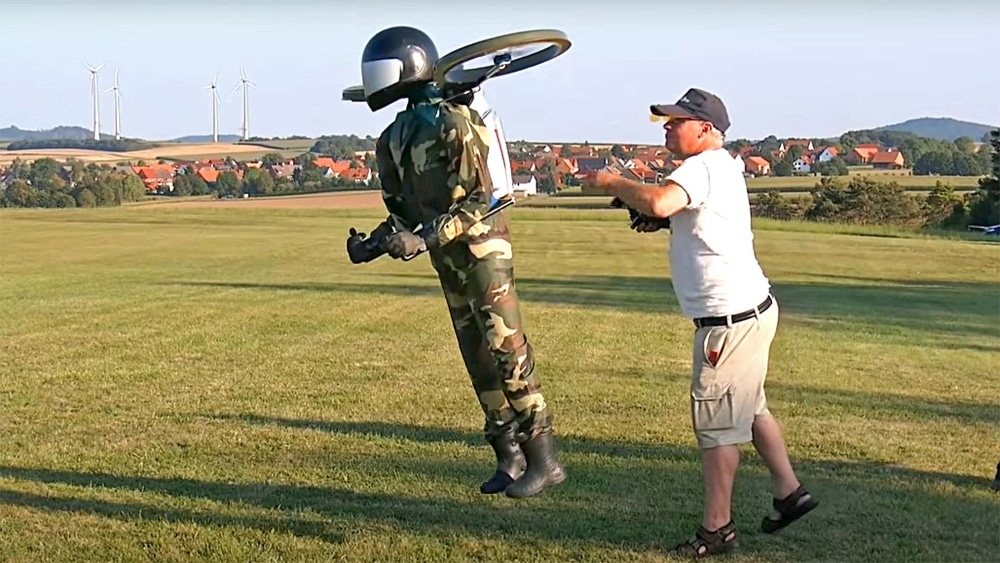Drone News Roundup: NASA Tests Mars Exploration Drones in Iceland, senseFly Teases Mapping Drone, LA’s Jetpack Guy, and More!
BY Zacc Dukowitz
29 January 2021This week we’re covering a recent video from senseFly teasing a new mapping drone, which will be unveiled during a webinar on February 1.
We’re also covering new information that reveals the mysterious LA Jetpack Guy could actually be a drone, a drone called the Lynchpin that can rotate in any direction while keeping its position, NASA’s tests of its Mars exploration drones in Iceland, and a drone created by researchers that mimics the movements of insects to help it fly better.
Now onward to the links!
NASA Tests Mars Exploration Drones in Iceland
Researchers at the University of Arizona have received a grant of $3.1 million from NASA to develop a drone that could act as a “field assistant” to a rover and be used to explore new areas on Mars. In order to create this drone Christopher Hamilton—the lead scientist in charge of the drone’s development—and his team have been conducting field tests in the vast lava fields in the highlands of Iceland. Apparently, the combination of lava flows and sandy terrain found there are similar to terrain found on Mars, and provide a fertile ground for testing this new drone technology.
READ MORE
senseFly Teases Release of New Mapping Drone


Watch this video on YouTube
senseFly is known for making one of the top professional drones for mapping on the market, the eBee, which has been released in several different versions (the Classic, the Plus, and the X). Now it looks like the company is gearing up to release a brand new mapping drone via a live webinar. But details are scarce. All we know at this point is that the drone is fixed-wing (like the eBee series), made for mapping, and targeted at “surveying and GIS professionals.”
SIGN UP FOR THE WEBINAR
Is the LA Jetpack Guy a Drone?


Mysterious reports backed up by smartphone videos have been surfacing over the last several months of a guy flying in a jetpack over the LAX airport at a remarkable 3,000 feet in the air. These videos are shaky and it’s hard to make out much detail in them, but they do give you the eerie feeling that someone—or something—is flying near the airplanes over Los Angeles.
Now it looks like the mystery may have been solved. According to correspondence obtained from the FAA via a Freedom of Information Act (FOIA) request, the jetpack guy was not picked up by radar, no jetpack companies were operating at the time, and the height is so great that a jetpack probably couldn’t reach it at a sustained speed. But a drone outfitted like the one shown in the picture above could reach that height, and reportedly could explain everything about these strange sightings.
READ MORE
Drone Submitted for Lynchpin Contest Can Rotate in Any Direction While Maintaining its Position


Watch this video on YouTube
The Lynchpin Contest is currently underway, but it looks like it may already have a winner (featured in the video above). The contest calls for the creation of a Lynchpin Drone, which is a drone that can “rotate into any orientation while maintaining position.” No drone like this has ever been made—until now, it looks like. Watch the video to see what we’re talking about, and click the link below to learn more about the Lynchpin Contest.
READ MORE
Researchers Create Drone that Mimics the Way Insects See the World While in Flight


Watch this video on YouTube
We’ve heard about drones being inspired by insects before. Flyability’s collision-tolerant drones were inspired by the ability of insects to collide and maintain their stability in flight, and more recently researchers have even experimented with placing actual moth antennae onto drones in order to help them smell chemicals. Now, researchers at the Micro Air Vehicle Laboratory (MAVLab) of Delft University of Technology in the Netherlands are using insects to improve the way drones land, take off, and navigate while in flight. Specifically, they’re co-opting what’s called optical flow—an insect’s perception of the speed with which objects move through its field of view—to help drones estimate distances while in flight in order to move more fluidly and avoid collisions.
READ MORE
Make sure to sign up for our free weekly newsletter using the button below so you can get our weekly newsletter every Saturday, with this roundup and our other featured stories from the week.


